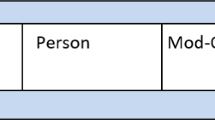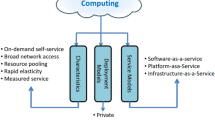Abstract
An internetware application is composed by existing individual services, while transaction processing is a key mechanism to make the composition reliable. The existing research of transactional composite service (TCS) depends on the analysis to composition structure and exception handling mechanism in order to guarantee the relaxed atomicity. However, this approach cannot handle some application-specific requirements and causes lots of unnecessary failure recoveries or even aborts. In this paper, we propose a relaxed transaction model, including system mode, relaxed atomicity criterion, static checking algorithm and dynamic enforcement algorithm. Users are able to define different relaxed atomicity constraint for different TCS according to application-specific requirements, including acceptable configurations and the preference order. The checking algorithm determines whether the constraint can be guaranteed to be satisfied. The enforcement algorithm monitors the execution and performs transaction management work according to the constraint. Compared to the existing work, our approach can handle complex application requirements, avoid unnecessary failure recoveries and perform the transaction management work automatically.
Similar content being viewed by others
References
Yang F Q. Thinking on the development of software engineering technology. J Software (In Chinese), 2005, 16(1): 1–7
Lu J, Tao X P, Ma X X, et al. Research on agent-based software model for internetware. Sci China Ser F-Inf Sci (in Chinese), 2005, 35(12): 1233–1253
Zhang A, Nodine M, Bhargava B. Global scheduling for flexible transactions in heterogeneous distributed database systems. IEEE Trans Know Data Eng, 2001, 13(3): 439–450
Gray J, Reuter A. Transaction Processing: Concepts and Techniques. San Mateo, California: Morgan Kaufmann Publishers, 1993
Mohan C. Tutorial: advanced transaction models survey and critique. In: Proceedings of the ACM SIGMOD International Conference on Management of Data. Minnesota: ACM Press, 1994. 521–521
Grefen P, Vonk J, Boertjes E, et al. Semantics and architecture of global transaction support in workflow environments. In: Proceedings of the Fourth IFCIS International Conference on Cooperative Information Systems. Edinburgh: IEEE Computer Society Press. 1999, 348–359
Pires P, Benevides M, Mattoso M. WebTransact: A framework for specifying and coordinating reliable web services compositions. Technical Report ES-578/02, 2002
Ren Y, Wu Q Y, Jia Y, et al. Transactional business coordination and failure recovery for web services composition. In: Proceedings of 3rd Conference on Grid and Corporative Computing. Wuhan: Springer Press, 2004. 26–33
Moss J. Nested transactions an approach to reliable distributed computing. PhD thesis. Cambridge: Massachusetts Institute of Technology, 1981
Molina H, Salem K. SAGAS. In: Proceedings of the ACM SIGMOD Conference on Management of Data. California: ACM Press, 1987. 249–259
Alonso G, Agrawal D, Abbadi A E, et al. Advanced transaction models in workflow contexts. In: Proceedings of International Conference on Data Engineering. New Orleans: IEEE Computer Society Press, 1996. 574–581
Li H C, Shi M L, Chen X X. The concurrency control algorithm in transactional workflows. J Software (in Chinese), 2001, 13(12): 1–9
Schuldt H. Process Locking: A protocol based on ordered shared locks for the execution of transactional processes. In: Proceedings of the ACM Symposium on Principles of Database Systems (PODS 2001). Santa Barbara: ACM Press, 2001. 289–300
Ding K, Jin B H, Feng Y L. Modeling and analysis of transactional workflows. J Comp (In Chinese), 2003, 26(10): 1304–1311
Mikalsen T, Tai S, Rouvello I. Transactional attitudes: Reliable composition of autonomous web services. In: Proceedings of the 2002 International Conference on Dependable Systems and Networks (DSN 2002). Washington D.C.: IEEE Computer Society Press, 2002. 792–793
Rusinkiewicz M, Sheth A. Specification and Execution of Transactional Workflows, Modern Database Systems: the Object model, Interoperability, and Beyond. New York: ACM Press/Addison-Wesley Publishing Co., 1995. 592–620
Ansari M, Ness L, Rusinkiewicz M, et al. Using flexible transactions to support multi-system Telecommunication Applications. In: Proceedings of the 18th International Conference on Very Large Data bases. Vancouver: Morgan Kaufmann Publishers, 1992. 65–76
Elmagarmid A, Leu Y, Litwin W, et al. A multidatabase transaction model for InterBase. In: Proceedings of the 16th International Conference on Very Large Data Bases. Queensland: Morgan Kaufmann Publishers, 1990, 507–518
Bhiri S, Perrin O, Godart C. Ensuring required failure atomicity of composite web Services. In: Proceedings of the 14th International Conference on World Wide Web, Chiba, Japan: ACM Press, 2005. 138–147
Author information
Authors and Affiliations
Corresponding author
Rights and permissions
About this article
Cite this article
Huang, T., Ding, X. & Wei, J. An application-semantics-based relaxed transaction model for internetware. SCI CHINA SER F 49, 774–791 (2006). https://doi.org/10.1007/s11432-006-2028-0
Received:
Accepted:
Issue Date:
DOI: https://doi.org/10.1007/s11432-006-2028-0




